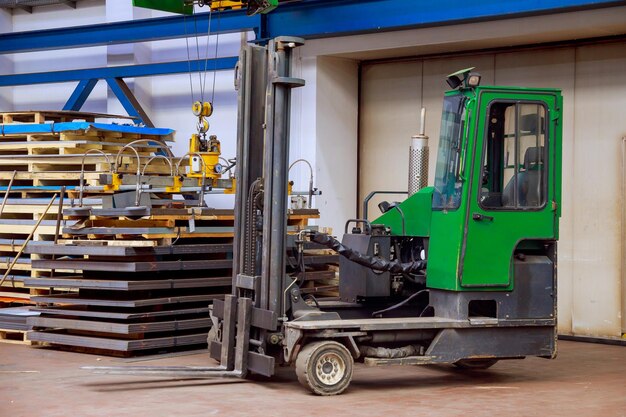Material handling is a crucial part of logistics, rail safety, and industrial operations, ensuring goods are moved, stored, and controlled efficiently. For companies in Australia’s logistics and rail sectors, understanding the different types of material handling equipment can significantly improve operational safety and productivity. In this guide, we’ll cover the four main types of material handling equipment, their applications, and how they benefit businesses in demanding environments like rail transport and large-scale warehousing.
1. Storage and Handling Equipment
Storage and handling equipment includes tools used to hold goods temporarily when they’re not in active transport. This category of equipment is essential for organising spaces and optimising the flow of materials within a facility. Common examples include shelving, racks, pallets, and stacking frames.
Applications:
Storage equipment is typically used in warehouses, distribution centres, and rail logistics hubs to streamline inventory management. Pallet racks and stacking frames, for example, make it easier to store bulk items safely and retrieve them quickly when needed.
Benefits:
- Enhanced Space Utilisation: Proper storage solutions help maximise available space, which is crucial in busy logistics areas.
- Improved Organisation and Access: Well-organised storage systems make it easier for workers to access materials, reducing downtime and enhancing workflow.
- Safety in Storage: Sturdy racks and frames provide secure storage, helping prevent accidents or damage to goods, which is particularly important for heavy materials common in rail operations.
2. Engineered Systems
Engineered systems are automated solutions designed to optimise complex material handling processes. This category includes equipment such as conveyor systems, automated guided vehicles (AGVs), robotic sorting systems, and automated storage and retrieval systems (AS/RS). These systems are often custom-designed to suit the unique requirements of each facility.
Applications:
Engineered systems are widely used in high-volume logistics centres, manufacturing facilities, and rail hubs, where consistent and fast handling of goods is necessary. Conveyor belts, for instance, are used to move items through different stages of processing or packaging with minimal manual effort.
- Increased Efficiency: Automated systems speed up handling processes, which is particularly beneficial in time-sensitive industries like rail transport.
- Reduced Labour Costs: By automating repetitive tasks, companies can allocate human resources to more complex roles.
- Enhanced Accuracy and Safety: Engineered systems minimise human error, providing a reliable means of handling goods and reducing safety risks associated with manual handling.
3. Industrial Trucks
Industrial trucks include a range of vehicles used for transporting materials, such as forklifts, pallet jacks, hand trucks, and order pickers. These trucks are essential for moving goods over short distances within a facility or between different points in a logistics chain.
Applications:
Industrial trucks are common in warehouses, factories, and rail yards, where heavy or bulky items need to be transported safely. Forklifts, for example, are used to load and unload goods from storage areas or transport materials onto rail cars.
Benefits:
- Flexibility in Movement: Industrial trucks can transport materials across varying distances, even in tight or confined spaces where conveyor systems are less effective.
- Reduced Physical Strain: By using forklifts or pallet jacks, workers can handle heavy loads with minimal physical strain, improving overall workplace safety.
- Adaptability for Different Tasks: With attachments such as clamps or extensions, trucks can be adapted to carry a wide range of goods, making them versatile assets in any facility.
4. Bulk Material Handling Equipment
Bulk material handling equipment is designed for managing materials in bulk, such as liquids, granules, and powders. Equipment in this category includes conveyor belts, hoppers, silos, and stackers. These machines are essential in industries that deal with large quantities of loose materials, including mining, agriculture, and certain areas of rail logistics.
Applications:
Bulk material handling equipment is critical in facilities that process raw materials or substances in high volumes, such as grain silos or coal storage sites. In the rail industry, this equipment helps in loading and unloading bulk commodities efficiently and safely.
Benefits:
- Efficient Handling of Large Volumes: Bulk handling equipment is tailored to manage massive quantities of materials, helping to improve throughput in demanding sectors.
- Reduced Spillage and Waste: Using specialised equipment reduces the risk of spillage, ensuring that valuable resources are conserved.
- Enhanced Workplace Safety: Bulk material handling reduces the need for manual handling of potentially hazardous substances, creating a safer environment for workers.
How Material Handling Equipment Boosts Safety and Efficiency in Rail and Logistics
For companies in Australia’s rail and logistics sectors, material handling equipment isn’t just about productivity – it’s essential for maintaining safe operations. Here’s how each type of equipment contributes to a safer, more efficient workplace:
- Automation Reduces Manual Handling Risks: Automated systems like conveyors and AGVs eliminate repetitive lifting and carrying, reducing the risk of injuries.
- Organisation Prevents Accidents: Proper storage and handling equipment keep goods organised, which minimises the chances of tripping, falls, or accidental damage to materials.
- Ergonomic Designs Improve Worker Safety: Many industrial trucks and bulk handling machines are designed with ergonomic features, reducing strain on operators and enhancing overall workplace comfort.
Choosing the Right Equipment for Your Material Handling Needs
Selecting the right equipment depends on the specific needs of your facility. Here are some tips to guide your choice:
- Evaluate Your Material Types and Volumes: Determine whether you need equipment for bulk materials, storage, short-distance transport, or complex automated processes.
- Consider Your Facility Layout: Automated systems like conveyors work best in spacious facilities, while industrial trucks may be more suited for smaller, flexible spaces.
- Factor in Safety Requirements: In high-risk sectors like rail transport, safety features are essential, so look for equipment that meets Australian safety standards.
Final Thoughts
Understanding the four types of material handling equipment – storage and handling, engineered systems, industrial trucks, and bulk material handling – is essential for any business in the logistics or rail sectors. By investing in the right equipment, companies can improve safety, efficiency, and operational productivity, making material handling a seamless part of their workflow.
For Australian companies seeking advanced tools to optimise material handling, choosing the right equipment can make a significant difference in productivity and safety. With the right systems in place, your business can not only meet industry standards but excel in a competitive landscape.




